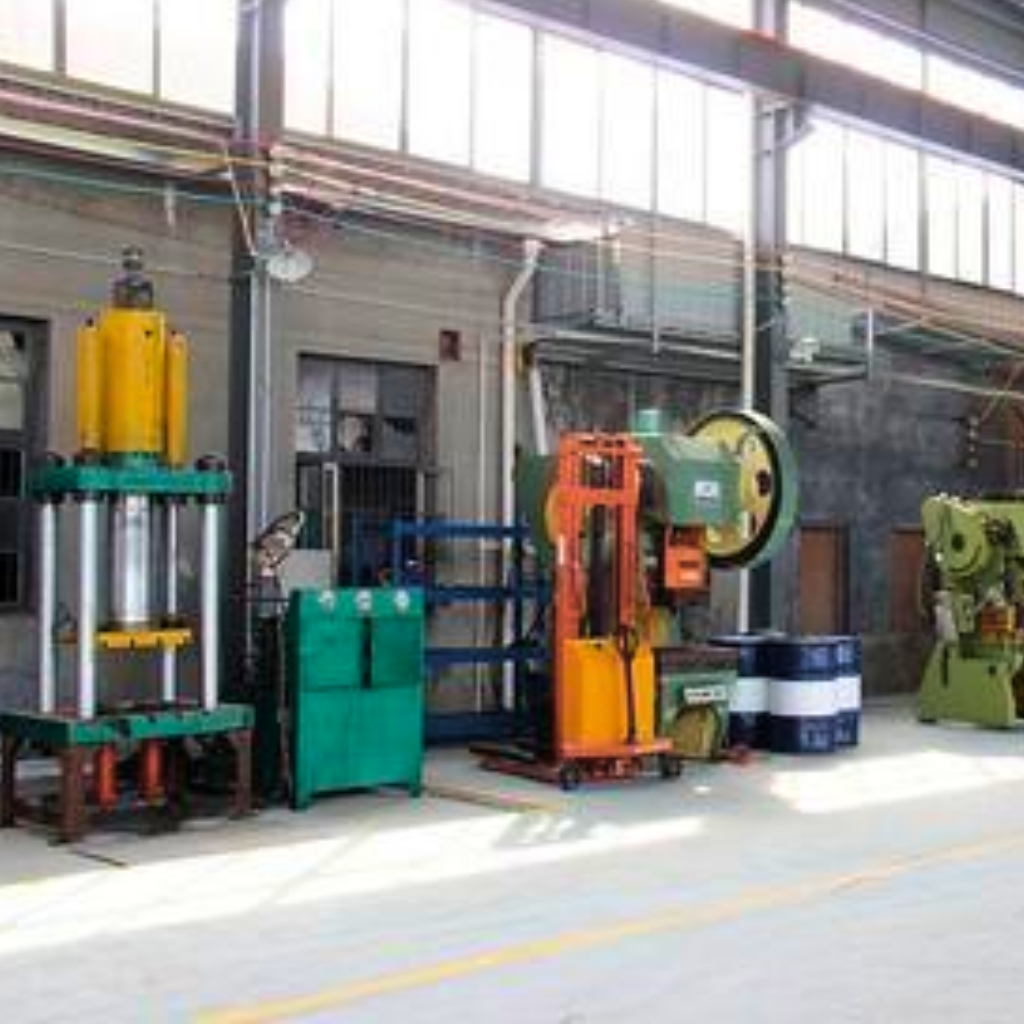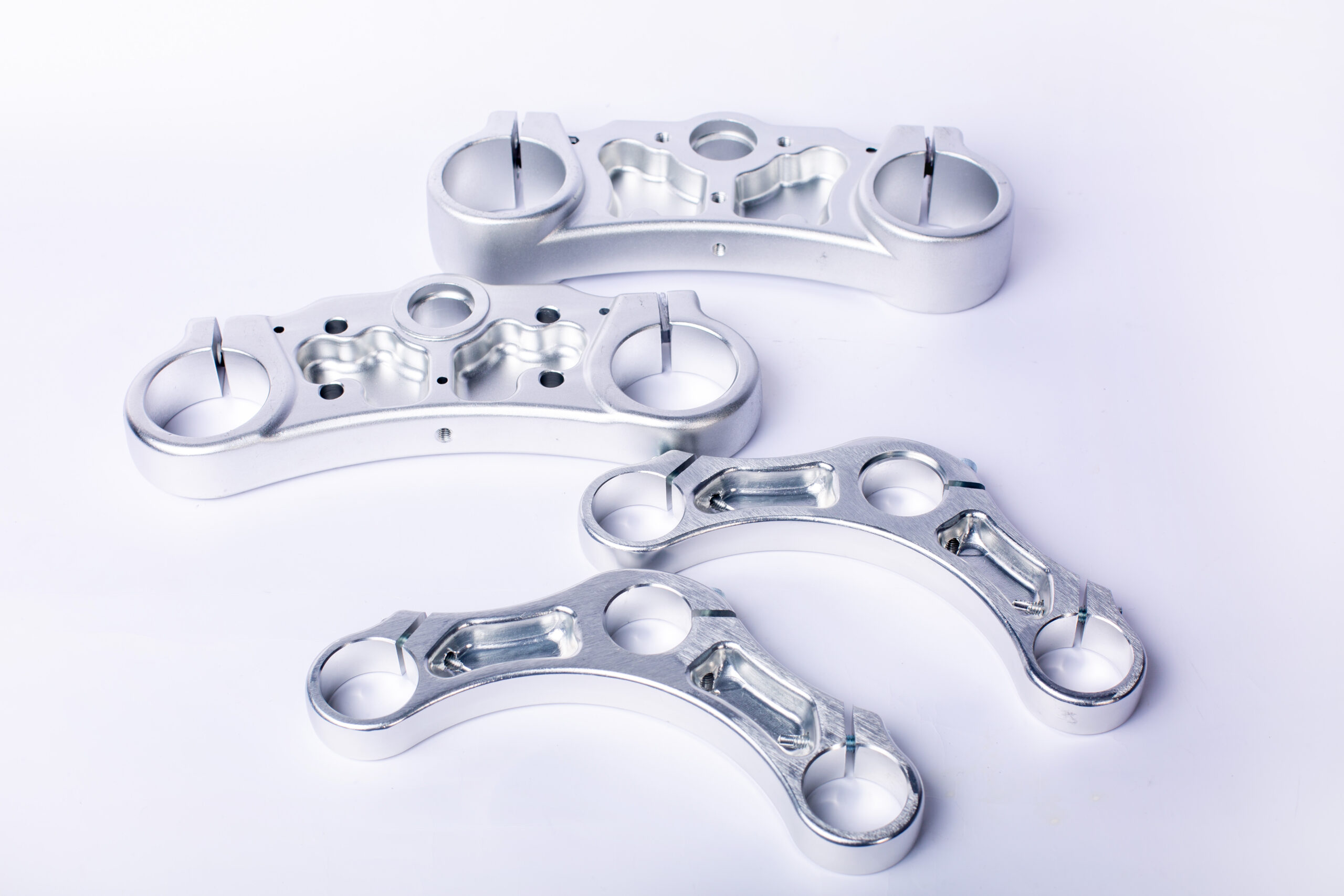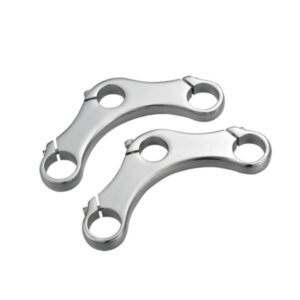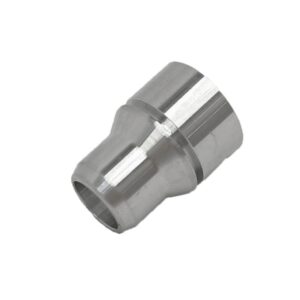MINGYU Tech. is a leading manufacturer and supplier of high-quality aluminum forgings in the global market. we have built a reputation for providing superior products, exceptional customer service, and competitive prices.We have modern and advanced production facilities, including state-of-the-art forging machines, heat treatment furnaces, and testing equipment, ensuring the highest level of precision and quality control.
We use only the highest quality aluminum alloys, sourced from trusted suppliers, to ensure the strength, durability, and reliability of our products. Our skilled engineers and technicians have years of experience and expertise in the forging process, allowing us to deliver products that meet or exceed international standards.
At Aluminum Forging Co., Ltd., we prioritize customer satisfaction and strive to provide the best products and services to meet their needs. With our commitment to continuous improvement and innovation, we continuously invest in research and development, introducing new and improved products to the market.
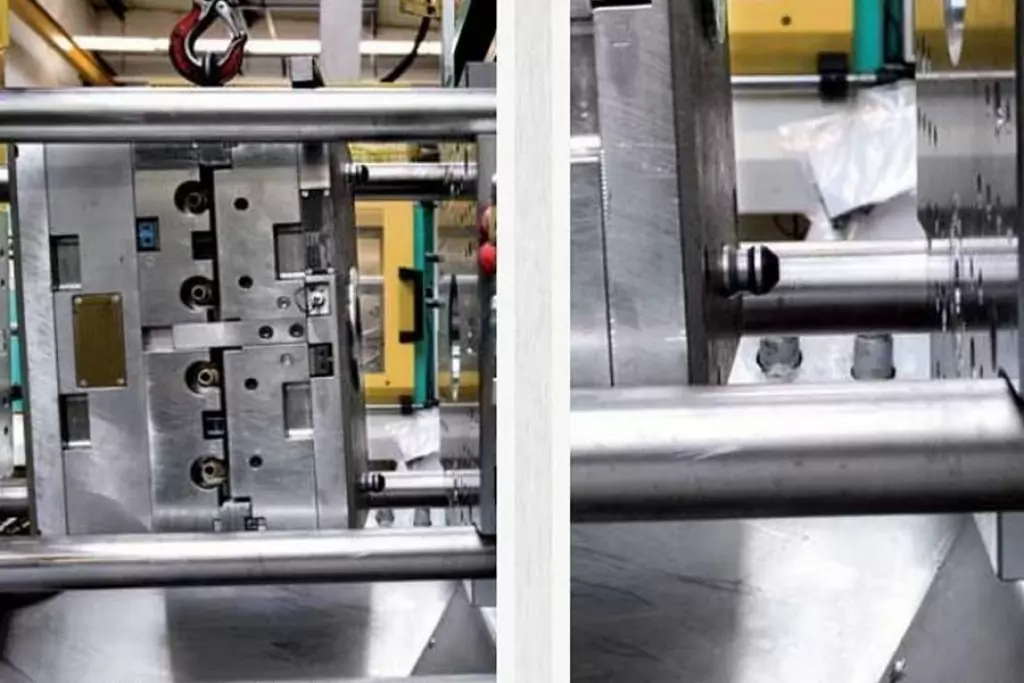
Aluminum forging is a highly versatile and efficient manufacturing process that has gained widespread use in various industries. Through the application of extreme heat and pressure, solid aluminum blocks are transformed into complex and strong components that are used in everything from automotive parts to aerospace components. The forging process not only enhances the structural integrity of the metal but also allows for precise shaping and customization to meet the specific requirements of each application. With its lightweight yet durable properties, aluminum forging offers a cost-effective solution for producing high-quality and high-performance parts that can withstand extreme temperatures and harsh environments. From reducing weight and increasing fuel efficiency in vehicles to improving overall performance and safety in airplanes, aluminum forging continues to revolutionize the world of engineering and design
Aluminum forging is a manufacturing process that involves shaping aluminum through compressive forces. This process is used to create strong and durable components, making it a popular choice in various industries such as aerospace, automotive, and construction. The process starts with heating the aluminum to a specific temperature and then using a die to apply pressure and shape it into the desired form. This results in a product that has improved strength, structural integrity, and resistance to corrosion. Aluminum forging offers many advantages, such as high precision, cost-effectiveness, and the ability to create complex shapes. Its lightweight nature and high strength-to-weight ratio make it ideal for applications that require both strength and lightweight design. With its versatility and durability, aluminum forging is an essential process in the production of numerous industrial and consumer products.

Aluminum forging is a specialized process that involves shaping aluminum into desired forms through the application of pressure and heat. It is a widely used manufacturing method for creating strong and durable components for a variety of industries, such as aerospace, automotive, and construction. With its unique properties of being lightweight, corrosion-resistant, and high strength, aluminum has become a popular choice for forging applications. In this process, aluminum billets are heated to a specific temperature, placed in a die, and then compressed by a forging press to form the desired shape. This results in a high-quality piece with enhanced mechanical properties and a refined surface finish. Let’s dive deeper into the world of aluminum forging and explore its benefits and applications.
1.Are there any specific industry standards or certifications for aluminum forgings?
2.What are the challenges associated with machining or finishing aluminum forgings?
3.What are the key differences between open die and closed die aluminum forging?
4.What are the main factors to consider when selecting a supplier for aluminum forgings?
5.Can aluminum forgings be produced in large quantities and at a fast pace?
6.How is the grain structure of aluminum controlled through the forging process?
1.Are there any specific industry standards or certifications for aluminum forgings?
Yes, there are several industry standards and certifications for aluminum forgings, including:
- ASTM B247 – Standard Specification for Aluminum and Aluminum-Alloy Die Forgings, Hand Forgings, and Rolled Ring Forgings
- AMS 4120 – Aluminum Alloy Forgings and Rolled or Forged Rings, 5.6Zn – 2.5Mg – 1.6Cu – 0.23Cr (7075-T73, T7351)
- AS9100 – Quality Management Systems – Requirements for Aviation, Space and Defense Organizations
- ISO 9001 – Quality Management Systems – Requirements
- NADCAP – National Aerospace and Defense Contractors Accreditation Program
- ASME Boiler and Pressure Vessel Code – Section VIII, Division 1 – Rules for Construction of Pressure Vessels
- MIL-STD-129 – Military Standard Marking for Shipment and Storage
- MIL-STD-130 – Identification Marking of U.S. Military Property
- SAE AS9102 – Aerospace First Article Inspection Requirement
- NORSOK M-650 – Qualification of Manufacturers of Special Materials.
2.What are the challenges associated with machining or finishing aluminum forgings?
1. Work hardening: Aluminum forgings can become harder and more difficult to machine as they are worked and shaped. This can lead to increased tool wear and slower machining speeds.
Heat sensitivity: Aluminum is a highly heat-sensitive material, meaning that it can easily deform or warp when exposed to high temperatures. This can be a challenge when machining or finishing aluminum forgings, as the heat generated by cutting tools can affect the shape and dimensions of the part.
Chip control: Aluminum is a soft and ductile material, which can result in long, stringy chips during machining. These chips can be difficult to control and can cause issues with tooling and surface finish.
Surface finish: Achieving a smooth and consistent surface finish on aluminum forgings can be challenging due to the material’s softness and tendency to deform under pressure. This can be especially problematic for complex or intricate shapes.
Tool selection: Choosing the right cutting tools for machining aluminum forgings can be a challenge. The material’s softness and tendency to work harden can require specialized tooling to achieve efficient and accurate machining.
Burrs and sharp edges: Aluminum forgings can have sharp edges and burrs that need to be removed during finishing. This can be a time-consuming and labor-intensive process, especially for complex or intricate parts.
Material variability: The composition and properties of aluminum forgings can vary depending on the alloy and manufacturing process used. This can make it challenging to develop a consistent and efficient machining or finishing process.
Dimensional stability: Aluminum forgings can be prone to dimensional changes during machining or finishing due to their sensitivity to heat and pressure. This can make it difficult to maintain tight tolerances and achieve precise dimensions.
Safety concerns: Machining and finishing aluminum forgings can produce fine aluminum dust, which can be a health hazard if inhaled. Proper safety measures, such as using appropriate ventilation and personal protective equipment, must be taken to minimize the risk of exposure.
Cost: Machining and finishing aluminum forgings can be more expensive compared to other materials due to the specialized tooling and processes required. This can be a challenge for manufacturers looking to reduce costs and improve efficiency.
3.What are the key differences between open die and closed die aluminum forging?
1. Process: The main difference between open die and closed die aluminum forging is the process used to shape the metal. Open die forging involves shaping the metal between two flat dies, while closed die forging involves shaping the metal within a closed die cavity.
Complexity: Closed die forging allows for more complex shapes and designs to be created, as the metal is completely enclosed within the die cavity. Open die forging, on the other hand, is limited to simpler shapes and designs.
Material Usage: Closed die forging requires more precise measurements and control, resulting in less material waste compared to open die forging. This makes closed die forging more cost-effective for producing high volume parts.
Surface Finish: Closed die forging produces a smoother surface finish compared to open die forging. This is because the metal is contained within the die cavity, resulting in less surface imperfections.
Tolerance: Closed die forging allows for tighter tolerances to be achieved compared to open die forging. This is due to the precise control and pressure applied during the closed die forging process.
Size and Weight: Open die forging is suitable for larger and heavier parts, as the metal is not confined within a die cavity. Closed die forging is more suitable for smaller and lighter parts, as the metal is contained within the die cavity.
Cost: Closed die forging requires specialized equipment and tooling, making it a more expensive process compared to open die forging. However, the higher precision and material savings can make it more cost-effective for certain applications.
Production Time: Closed die forging typically has a longer production time compared to open die forging, as it involves more steps and processes. This can impact the overall lead time for producing parts.
Strength: Both open die and closed die forging result in strong and durable parts. However, closed die forging can produce parts with higher strength and better mechanical properties due to the controlled and uniform grain structure.
Applications: Open die forging is commonly used for producing large and simple parts such as shafts, rings, and discs. Closed die forging is suitable for producing smaller and more complex parts such as gears, bolts, and fittings.
4.What are the main factors to consider when selecting a supplier for aluminum forgings?
1. Quality: The quality of the aluminum forgings is crucial as it directly affects the performance and durability of the final product. It is important to select a supplier who has a proven track record of producing high-quality forgings.
Experience and Expertise: Look for a supplier who has extensive experience and expertise in producing aluminum forgings. They should have a thorough understanding of the forging process and be able to provide technical support and guidance.
Production Capacity: The supplier’s production capacity should match your requirements. They should be able to meet your demand for aluminum forgings in terms of quantity, size, and complexity.
Material Selection: The supplier should have a wide range of aluminum alloys available to meet your specific needs. They should also be able to provide guidance on the best alloy for your application.
Certifications and Standards: The supplier should have the necessary certifications and comply with industry standards for aluminum forgings. This ensures that the forgings meet the required quality and safety standards.
Cost and Pricing: While cost is an important factor, it should not be the sole determining factor. It is important to consider the overall value and quality of the forgings rather than just the price.
Lead Time and Delivery: The supplier should have a reliable and efficient production process to ensure timely delivery of the forgings. They should also have a contingency plan in case of any delays.
Customer Service: A good supplier should have excellent customer service and be responsive to your needs. They should be able to provide timely updates and address any concerns or issues that may arise.
Reputation and References: Do your research and check the supplier’s reputation in the industry. Ask for references and feedback from their previous customers to get an idea of their reliability and quality of service.
Location: Consider the location of the supplier in relation to your business. A local supplier may offer more convenience and cost savings in terms of transportation and logistics.
5.Can aluminum forgings be produced in large quantities and at a fast pace?
Yes, aluminum forgings can be produced in large quantities and at a fast pace. The production process for aluminum forgings involves heating the aluminum to a malleable temperature, then shaping it using a die or hammer. This process can be automated and repeated quickly, allowing for large quantities to be produced in a short amount of time. Additionally, aluminum is a lightweight and easily workable material, making it easier to produce large quantities compared to other metals.
6.How is the grain structure of aluminum controlled through the forging process?
The grain structure of aluminum can be controlled through the forging process by manipulating the temperature, strain rate, and deformation rate during the forging process. This is known as thermomechanical processing.
Temperature: The temperature at which the aluminum is forged plays a crucial role in controlling the grain structure. Higher temperatures promote grain growth, resulting in larger grains, while lower temperatures promote finer grains. By carefully controlling the temperature, the desired grain size can be achieved.
Strain rate: The strain rate, or the rate at which the aluminum is deformed during forging, also affects the grain structure. Higher strain rates result in smaller grains, while lower strain rates result in larger grains. This is because higher strain rates promote more deformation and break up the existing grains, resulting in finer grains.
Deformation rate: The deformation rate, or the rate at which the aluminum is compressed during forging, also plays a role in controlling the grain structure. A higher deformation rate results in more deformation and break up of the existing grains, resulting in finer grains.
Die design: The design of the forging die can also influence the grain structure. A die with a complex shape or sharp corners can cause localized deformation and result in a non-uniform grain structure. Therefore, the die design should be optimized to promote uniform deformation and grain structure.
Heat treatment: After forging, the aluminum can be subjected to a heat treatment process to further refine the grain structure. This involves heating the aluminum to a specific temperature and then cooling it at a controlled rate. This process helps to break up any remaining coarse grains and promote a more uniform and fine-grained structure.
Overall, by carefully controlling the temperature, strain rate, deformation rate, die design, and heat treatment, the grain structure of aluminum can be controlled and optimized for the desired mechanical properties.